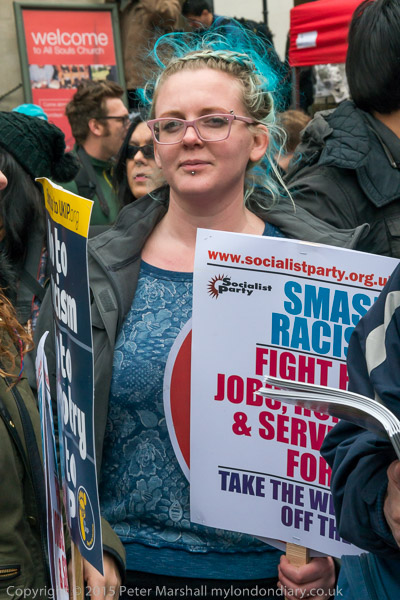
How do I – and other photographers – decide what to photograph? It’s a question I often ask myself when covering events, and although there is no list of rules, there are certainly some things that I bear in mind.
Foremost is that I will only photograph things that interest me. I’m in the fortunate position never to have to take a photograph simply because I think it will sell.
Not that I’m rich and don’t need money, but in the past I earned enough to live on from teaching and now I could get by on my pension (and my wife’s) and my needs are relatively small, having long since paid off my mortgage. So I don’t need to cover the kind of events – or take the kind of pictures – that are most likely to sell. I’m happy to leave those to colleagues who might enjoy them more and who need the money more than me.
This affects both which events I chose to attend, and also often the type of pictures that I take. Although I’ve taken some reasonable images of fairly well-known people that have been published, I don’t go out of my way to photograph celebrities. There are quite a few I don’t recognise in any case, and when I’m standing around talking with other photographers and they name one, I’ve often never heard of them.
At protests, there are some people who stand out for various reasons. Turquoise hair might well be one of them, but for me it’s important to relate them to the event. I would have been happier with the image above if I could read more of the placard the woman in it was holding.
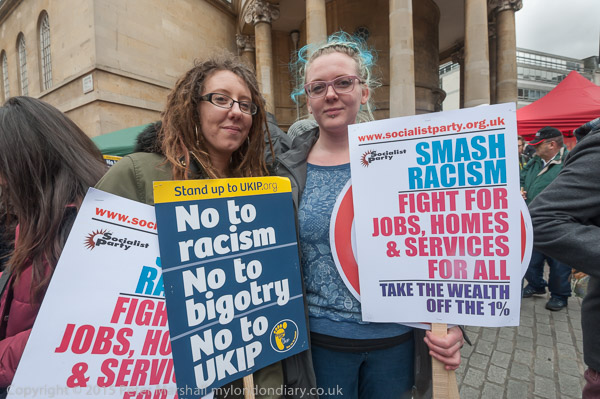
Having taken the first image using a short telephoto (99mm equiv) from a little distance through a crowd I realised immediately it wasn’t quite what I wanted. Although I don’t pose people, I often like them to be aware that I’m taking their picture and with the 16mm I was quite close, and they have posed for me, with two placards that clearly spell out the main issues of the protest.
I could perhaps have framed a little more tightly, but I liked having a recognisable part of All Souls Langham Place in the background, a church with close connections to the neighbouring BBC, though how many people would recognise it is perhaps debatable.
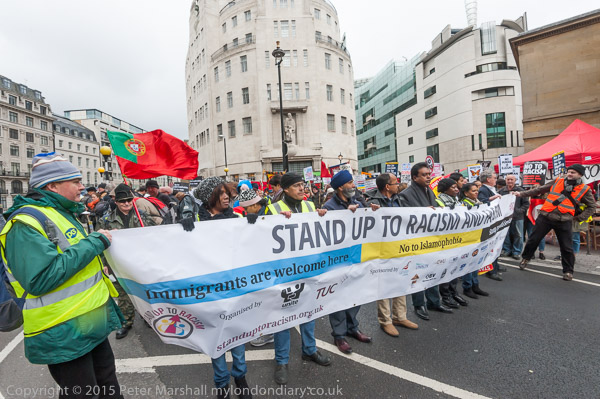
As well as taking pictures that relate to the event, its also important to me to try and give a fair and accurate representation of the event. Although it’s usually important to photograph what is at the front of a march, I always try to work my way through the whole of it (though a few are too large to allow this.)
I seldom photograph banners and groups head on from the centre. I find such pictures rather boring, and always prefer to work from some way to the side unless there is a good reason to do otherwise. I’d also prefer the people to be actually marching, but sometimes this isn’t possible – and here they are standing still. I wanted to get the iconic Broadcasting House in the background, and would have liked to take this picture from rather further back with a longer lens to make it seem larger, but unfortunately there were probably at least 50 people taking pictures in the way.

Unfortunately the stewarding on many marches make it difficult to photograph the front of the march once it is moving, but things are usually easier a little way back. Though if a march is tightly packed it is often hard to get enough clear space to photograph banners. Again an approach from the side is usually easier, though it may make it hard to read the banners.
The start of the march is a ‘key moment’ and one I usually try to photograph along with other key moments in the event. There is I think an important difference between key moments and the kind of pictures that make the news; key moments are those that tell the story, while news images are often quite peripheral. Five thousand people may march peacefully but if one idiot attacks a policeman, for most newspapers that is the story and the picture they want. If I see something sensational in this way I’ll usually photograph it, but that isn’t what I’m looking for (and sometimes I have decided not to photograph such things or not to file them where I felt they misrepresented the event.)
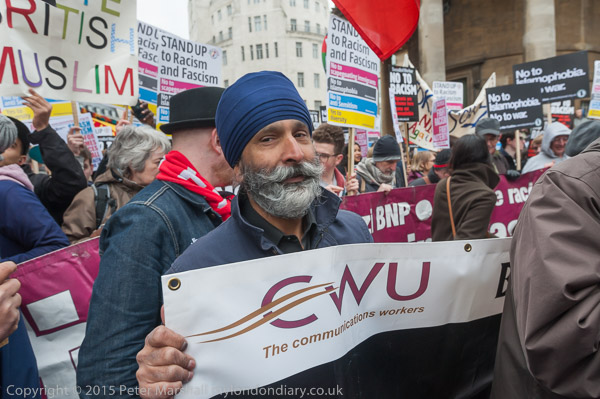
This event was called ‘Stand Up To Racism’ and for me it was important to show the wide range of people taking part, including many from London’s many ethnic communities. As well as those key moments I’m also trying to build up a picture of the event, to tell its story.
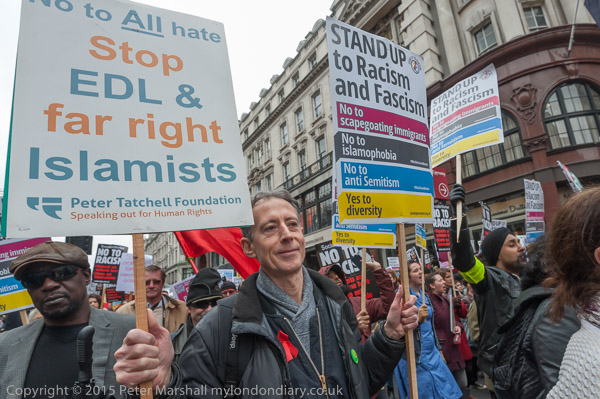
Part of that story is the people who are taking part, and I try to show the whole range, though those that look in some way more interesting in some way are more likely to appear in my pictures. As too are any well-known people taking part, who in this case included Peter Tatchell and several others.
And for many events, placards, posters and banners are vital, and it’s important to frame them so that they are legible. Occasionally I’ll deliberately cut one off part way across, though if so I try to leave enough to make it possible for the reader to work out the text. More often I’ll carefully position the frame and zoom to leave them ending close to the edges – as in the image of Peter Tatchell.
Apologies for rambling on, partly because I wrote this over a busy couple of days. But as you look at the pictures in Stand Up to Racism March I hope it helps to make clear why I took them as they are.
______________________________________________________
My London Diary : Buildings of London : River Lea/Lee Valley : London’s Industrial Heritage
All photographs on this and my other sites, unless otherwise stated, are taken by and copyright of Peter Marshall, and are available for reproduction or can be bought as prints.
To order prints or reproduce images
________________________________________________________